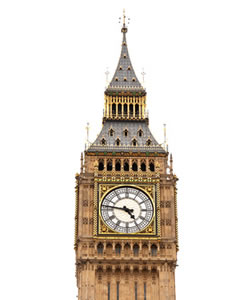Get in touch 0117 325 0526
Get in touch 0117 325 0526
 What do we already know?
What do we already know?
We updated you in our July 2015 Newsletter Government reforms (1): Trade union bill on the Government’s proposed package of Trade Union reforms. The reforms are to bring about changes to the balloting rules for industrial action and measures on picketing, facility time and political donations as well as additional powers for the Certification Officer.
We further updated you in our May 2016 Newsflash New law on its way that on 4 May 2016 the final step (Royal Assent) was taken in respect of authorising the Trade Union Bill and that it had become the Trade Union Act 2016 (the Act). We told you that the Act would be phased into law during 2016 and perhaps into 2017.
The Act provides that, in all industrial action ballots, at least 50% of those entitled to vote must do so and a simple majority of those votes must be in favour of action (e.g. if 100 members are balloted, at least 50 must vote, of which 26 or more must vote yes for a valid mandate).
In ballots where a majority of those entitled to vote are ‘normally engaged’ in the provision of ‘important public services’ (IPS), at least 40% must vote in favour of the action. This is in addition to the above 50% turnout threshold and simple majority requirement (e.g. if 100 members are balloted, at least 50 must vote and at least 40 vote yes). Private sector union members are included in the 40% threshold if they are delivering such services.
When assessing whether the threshold applies, a ‘reasonable belief’ defence is available to trade unions, reducing the risk of litigation over whether or not a ballot is compliant (i.e. a trade union may argue that it reasonably believed that a majority of those balloted were not engaged in providing IPS and that the 40% threshold did not apply).
What’s new?
1. Regulations on important public services (‘IPS’)
The Government has published final regulations which specify in more detail which public services are subject to the 40% ballot support thresholds (as explained above). This follows the Government’s consultation on the type of occupations and functions which should be subject to the 40% threshold.
However, we’re still waiting for the new balloting requirements to come into force – these regulations just clarify the detail of who will be caught by the 40% threshold for important public services once it is brought in.
The regulations, which must be approved by Parliament, are likely to come into force on 1 March 2017, or, if Parliament has not approved them by that time, 21 days after approval. The Government will also publish guidance to support the application of the regulations.
The regulations confirm that IPS include the following:
There are five separate Important Public Service Regulations 2017 in respect of each of the above points.
Knowing when the 40% ballot support threshold applies – i.e. whether a majority of those entitled to vote are ‘normally engaged’ in the provision of important public services – is likely to become a matter of dispute between some employers and trade unions. Practical difficulties will arise, for example, where there are mixed workforces (where some carry out IPS, some do not) and multiple duties (where some spend only part of their time on IPS duties). Unfortunately, while the regulations provide some clarity, many grey areas remain.2.
2. Electronic balloting
The Department for Business, Energy and Industrial Strategy (BEIS) has announced that an independent review on the delivery of secure methods of electronic balloting will be chaired by Sir Ken Knight and will report to Parliament by no later than December 2017. The review is required under the Trade Union Act 2016 and may herald the introduction of electronic balloting in industrial disputes.
The review will address the following issues:
Tags: Trade Union bill, Trade Union reform
Categories: Employment Law

5.0/5